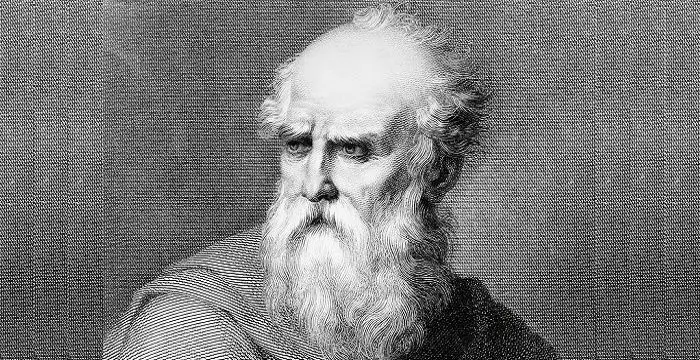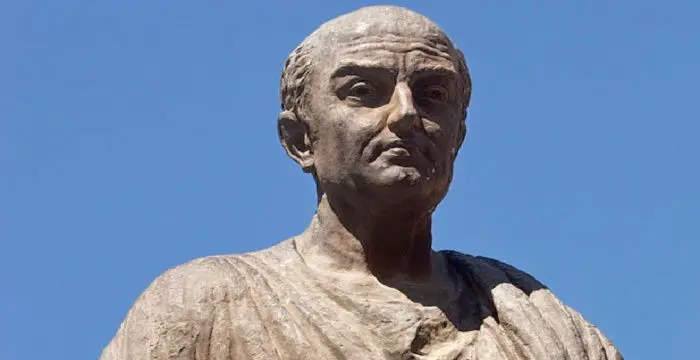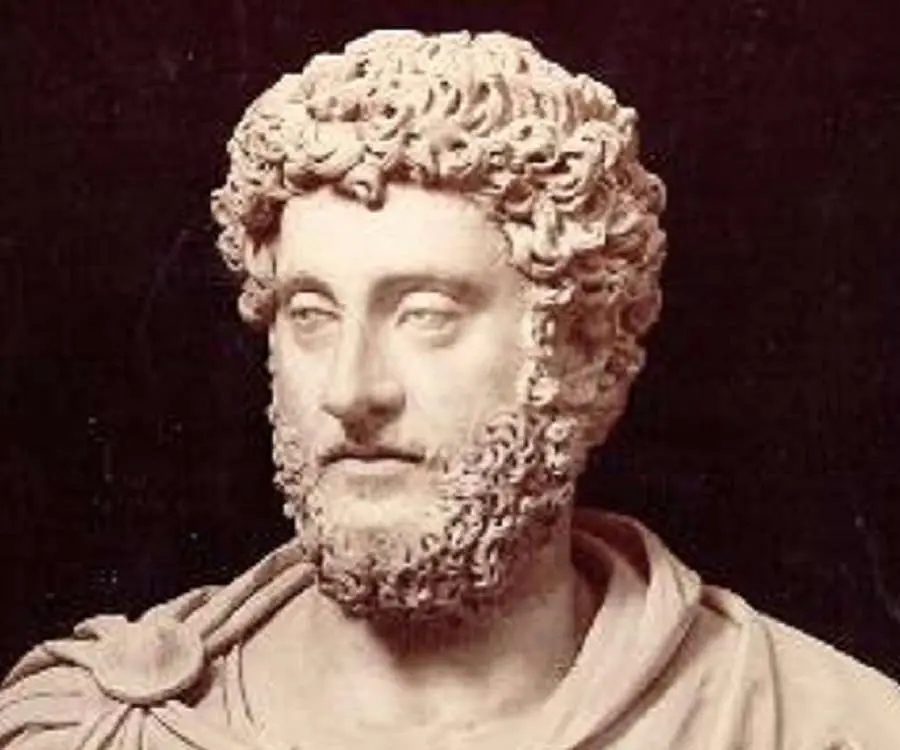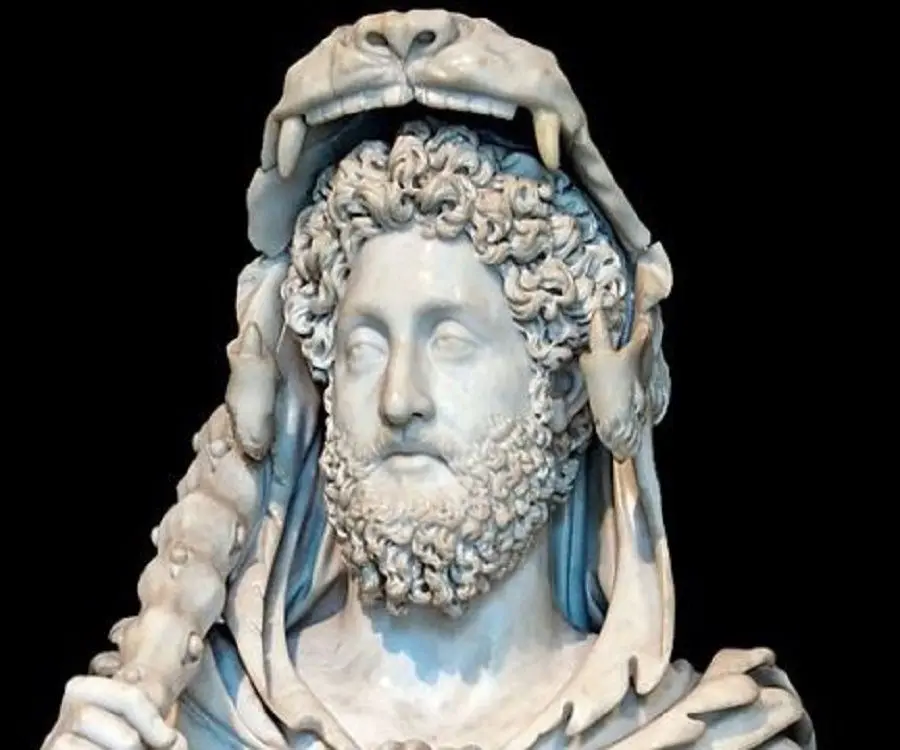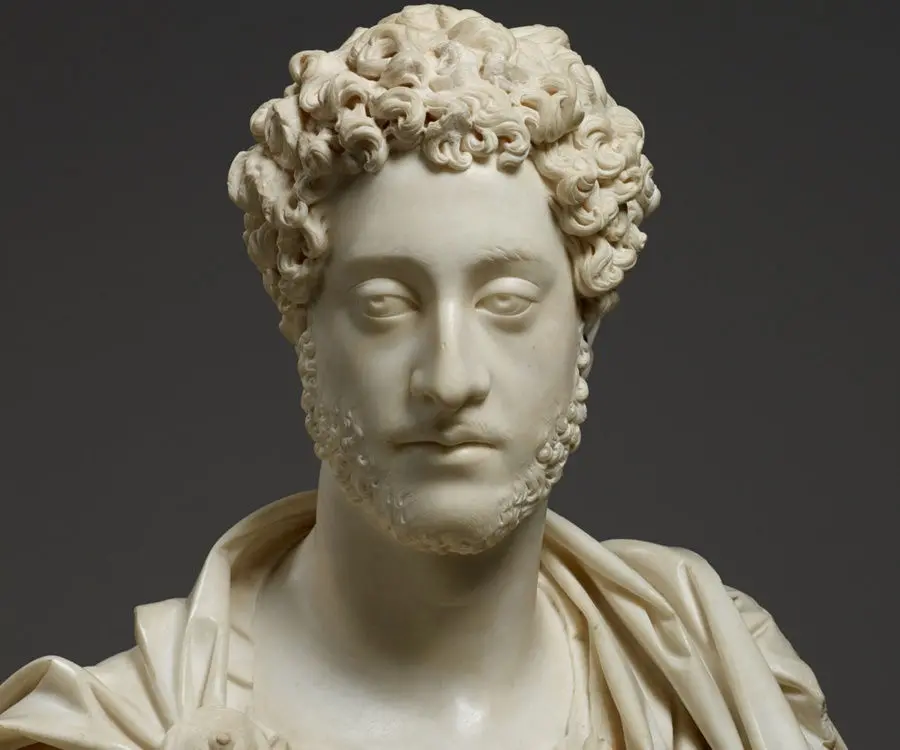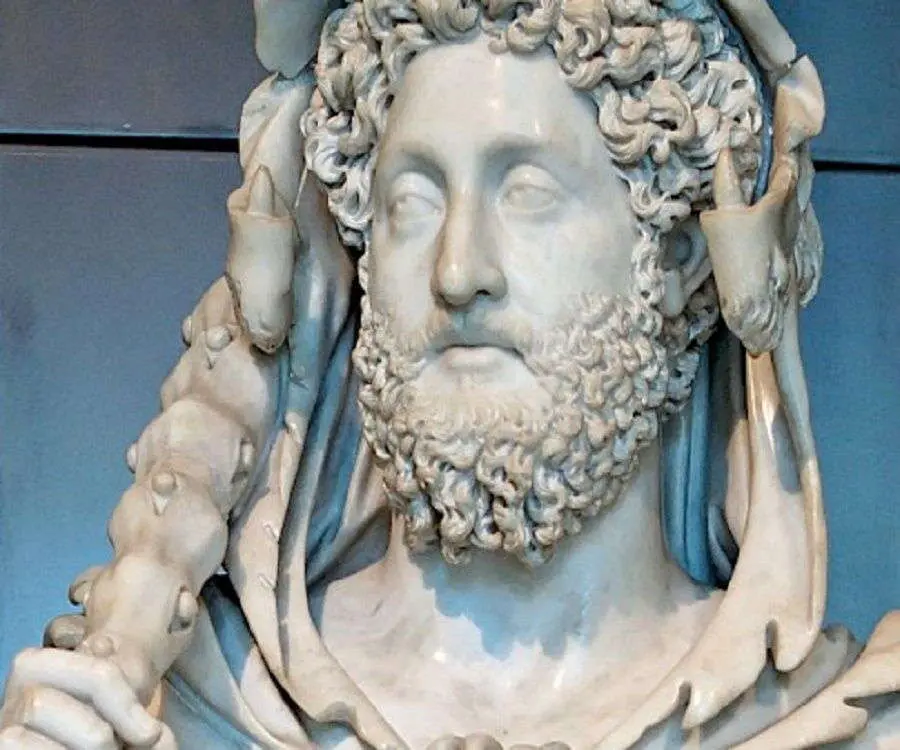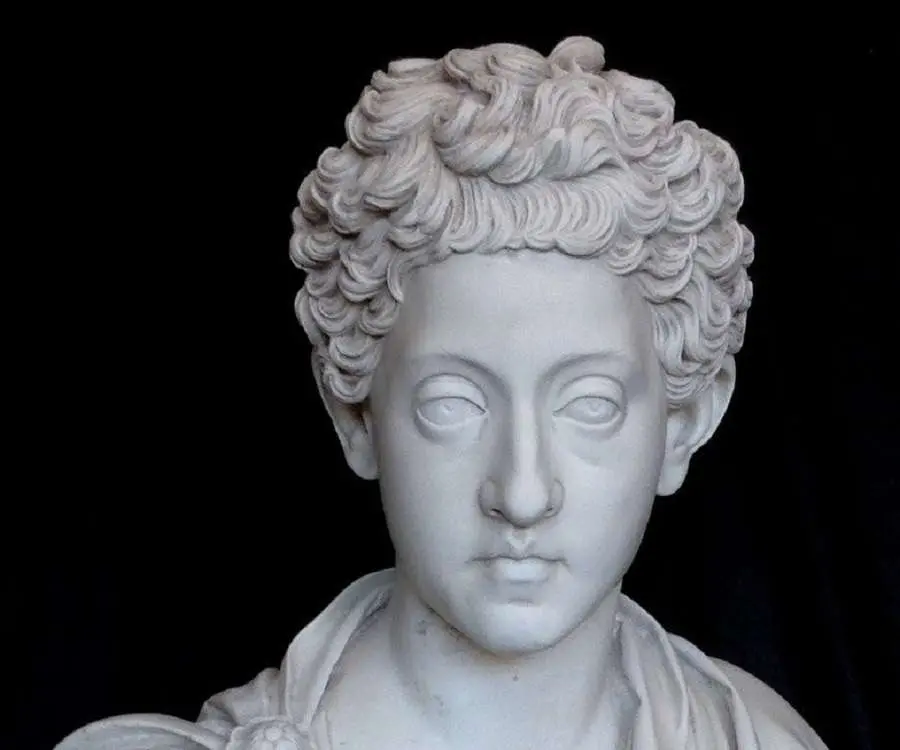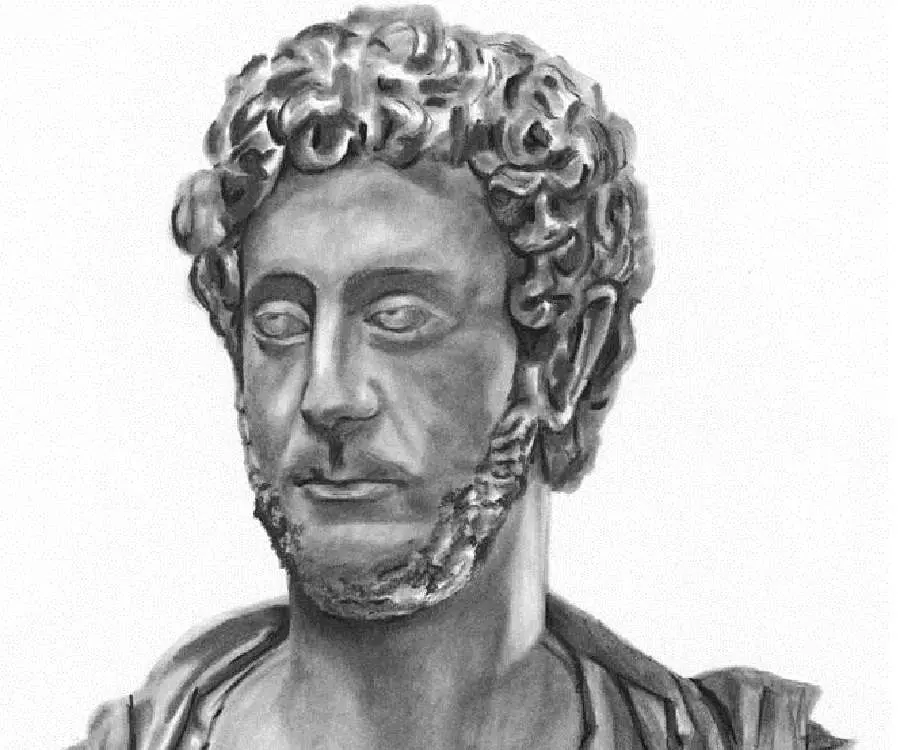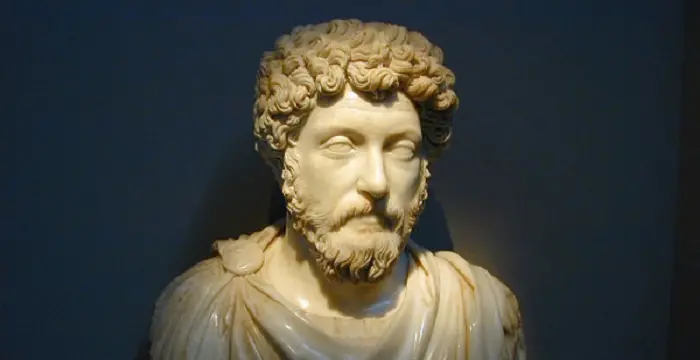
Commodus - Kings, Facts and Childhood
Commodus's Personal Details
Commodus (Lucius Aurelius Commodus) was a Roman emperor during the early years of the first millennium
| Information | Detail |
|---|---|
| Birthday | August 31, 161 |
| Died on | December 31, 192 |
| Nationality | Ancient Roman |
| Famous | Historical Personalities, Emperors & Kings, Ancient Roman Men, Emperors, Kings, Roman Emperor |
| Spouses | Bruttia Crispina (m. 178 AD) |
| Siblings | Annia Aurelia Galeria Faustina, Annia Cornificia Faustina Minor, Domitia Faustina, Fadilla, Gemellus Lucillae, Hadrianus, Lucilla, Marcus Annius Verus Caesar, Titus Aelius Aurelius, Titus Aurelius Fulvus Antoninus, Vibia Aurelia Sabina |
| Known as | Lucius Aurelius Commodus |
| Birth Place | Lanuvium |
| Gender | Male |
| Sun Sign | Virgo |
| Born in | Lanuvium |
| Famous as | Roman Emperor |
| Died at Age | 31 |
// Famous Ancient Roman Men
Vitruvius
Vitruvius was a Roman architect, author, and military engineer during the 1st century BC. Check out this biography to know about his childhood, family life, achievements and fun facts about his life.
Flavius Odoacer
Flavius Odoacer was a soldier who went on to become the King of Italy. This biography profiles his childhood, family, life history, and timeline.
Lucius Annaeus Seneca
Lucius Annaeus Seneca, commonly known as Seneca, was a Roman philosopher and statesman. This biography profiles his childhood, life, career, works, achievements & timeline.
Commodus's photo
Who is Commodus?
Commodus was a Roman emperor during the early years of the first millennium. Born Lucius Aurelius Commodus, he is known as a ruler who designed a major turning point in Roman history. Commodus was appointed as a co-ruler, at the age of 16, after fighting alongside his father and emperor, Marcus Aurelius, during the ‘Marcomannic Wars.’ He later went on to succeed his father as the emperor, which made him the first Roman prince in nearly 100 years to have been able to take the reins from his biological father. Though Commodus's rule was not marked by any gruesome wars like those of his predecessors, his time on the throne involved various scandals and conspiracies. In the midst of such chaos, Commodus was perceived as a quintessential dictator, which led to him developing a “God complex.” His reign is also remembered as the final chapter of a peaceful time in the Roman Empire which had lasted for about 84 years. Like many Roman emperors before and after him, Commodus was assassinated by the erstwhile Roman military leader. His style of rule and the conspiracies hatched during his reign are often cited as the reasons behind the subsequent “Year of the Five Emperors,” a time which shook the Roman Empire to its foundations.
// Famous Emperors
Sundiata Keita
Sundiata Keita was the founder of the Mali Empire in West Africa. This biography profiles his childhood, early life, struggles, founding of empire, rule, administration, achievements and also gives some fun facts.
Ashoka
Ashoka was the third emperor of the Mauryan Dynasty and ruled almost the entire Indian subcontinent. This biography profiles his childhood, life, reign, achievements and timeline
Murad IV
Murad IV was one of the mighty Sultans in the history of the Ottoman Empire. This biography profiles his childhood, family, accession, rule, administration and timeline.
Childhood & Early Life
Lucius Aurelius Commodus was born in 161 AD, to the erstwhile Roman emperor, Marcus Aurelius, in Lanuvium, near Rome. His mother, Anna Galeria Faustina Minor, was the first cousin of Marcus.
Commodus also had an elder twin brother, Titus Aurelius Fulvus Antoninus. Titus died in 165, making Commodus the eldest son of Emperor Marcus and the heir apparent to the throne. He had 12 other siblings, including Titus, all natural-born children of his father.
Of the 13 children of Marcus Aurelius, only six remained at the time of Emperor Marcus's death. Of these six children, Commodus was the only son.
In 166 AD, Commodus was accorded the title of “Caesar,” an honor reserved for the children of the royal family. He was also provided with the services of his father's physician, Galen, to make sure he remained healthy, as he was the only remaining son of the emperor.
In his early years, he was tutored by a number of teachers, to develop his intellectual capabilities. These teachers included Onesicrates, Titus Aius Sanctus, and Antistius Capella among others.
His first tryst with the military was in 172 AD, when he was stationed at Carnuntum, the headquarters of Marcus Aurelius in the ‘Marcomannic Wars.’ The same year, he was bestowed with the victory title “Germanicus” in full view of the Roman army.
In 175 AD, Commodus was inducted into the ‘College of Pontiffs,’ a move which formally began his public life at an age of 14. Titles did not stop coming his way as he was appointed as the consul of the Roman Empire in 177 AD and as the co-ruler to Emperor Marcus Aurelius later that year.
Between becoming the consul and the co-ruler of the Roman Empire, Commodus married Bruttia Crispina.
The Reign of Emperor Commodus
Marcus Aurelius died in March 180 AD, leaving the reins of the Roman Empire to his only son, Commodus.
Commodus began his reign by making peace with the Danubian tribes in 180 AD. He arrived in Rome amidst much fanfare, as his effort to maintain peace was perceived as a triumph. Contrary to preceding emperors who maintained a strong influence on the governance of the empire, Commodus always came across as disinterested in the details of the administration. He instead appointed a series of his loyal confidantes, such as Saoterus, to run the empire on his behalf.
His cavalier attitude toward ruling brought a series of disasters, the first of which began in 182 AD.
Assassination Plots, Murder & Conspiracies in 182 AD
The year 182 AD marks the time when Commodus's rule faced its first challenge. Lucilla, one of Commodus’s sisters, made an attempt to assassinate the emperor through the two alleged lovers she had: Marcus Ummidius Quadratus Annianus and Appius Claudius Quintianus.
The assassination attempt failed, as the emperor was saved by his bodyguards. Both the accused were later executed, and Lucilla was exiled to Capri, where she was assassinated later. The motive behind the plot had supposedly been Lucilla’s jealousy toward Queen Crispina.
The year was also marked by the assassination of Saoterus. This event saddened Commodus greatly, as he had grown fond of Saoterus. His assassination was believed to have been arranged by two praetorian prefects: Tarrutenius Paternus and Sextus Tigidius Perennis. The former was also involved in the aforementioned plot to assassinate Commodus. Perennis later backstabbed Paternus by implicating him in the murder of Saoterus.
Paternus was executed soon after, as Perennis seized control over the functioning of the government while Cleander was appointed as the new chamberlain. It was later revealed that it was Cleander who had put the final nail in Saoterus's coffin.
Rumblings in Dacia & Britain & the Fall of Perennis
Dacia, a region in Greece, got embroiled in a war in 183 AD. This campaign was unique, as it presented two distinguished military leaders, Clodius Albinus and Pescennius Niger, who would later become contenders for the throne of the Roman Empire.
The Roman army in Britain was also a source of great concern in Rome, as they were close to the point of mutiny. Perennis drafted the army in Britain to Italy to suppress the uprising of brigands. A detachment of the Roman army from Britain denounced Perennis in front of Commodus. They claimed Perennis was planning to make his own son the emperor, by supplanting Emperor Commodus. This news struck Commodus who immediately ordered the beheading of Perennis and the killing of Perennis’s wife and sons.
The Rise & Fall of Cleander
The direct beneficiary Perennis’s death was Cleander. The detachment of Roman soldiers from Britain, who made the execution of Perennis possible, was apparently set up by Cleander to do the same.
With Perennis gone, the entire responsibility of handling government and public affairs fell into Cleander's lap. He used this power to sell public offices to the highest bidders.
This stench of incessant corruption in Rome spread across Europe. Rebellions were springing up in different regions of the empire. All the while, Cleander sat in Rome, filling his coffers. At the true height of power, Cleander became the supreme commander of the ‘Praetorian Guard.’
In 190 AD, an incident of grain shortage became the undoing of Cleander. A mob demonstrated against Cleander at the ‘Circus Maximus,’ during a horse race. Angered by protestors, Cleander ordered the ‘Praetorian Guard’ to suppress the mob. He was stopped by Pertinax, who was the city prefect of Rome at that time.
With the mob after him, Cleander scurried to Commodus in the hope of being saved from the angry mob. The emperor, however, chose to listen to his mistress, Marcia, who urged Commodus to have Cleander and his son executed. The king obliged, and Cleander and his son met a gruesome end to their lives.
The God Complex
After the death of Cleander, Commodus became more involved in the day-to-day operations of Rome.
Soon, Commodus emerged as a megalomaniac in the eyes of the Senate and the public in general. He changed the name of Rome to 'Colonia Lucia Annia Commodiana.' However, he did not stop there.
He renamed fleets, palaces, the Senate, and even the people of the empire, after his name. His fall into the “God complex” is still considered by many historians as the beginning of the fall of the Roman Empire. Besides changing names, he also instituted several statues of himself around the city.
The Death of Commodus
Considering his actions, Commodus’s assassination on December 31, 182 AD, came as no surprise. The assassination was planned by Prefect Laetus and Eclectus. They poisoned Commodus’s food. However, the plan failed as the emperor vomited the poison out. They attempted to kill Commodus again by sending his wrestling partner Narcissus to strangle him. This time, the plan worked, as Narcissus strangled Emperor Commodus in his bath.
Upon his death, the Senate promptly declared Commodus as a public enemy and undid all the renaming orders he had given. Pertinax, the military leader of the Roman army, succeeded Commodus but managed to keep the throne only for a few weeks. This tumultuous time later came to be known as the “Year of the Five Emperors.”
Major Works
Upon gaining the throne, Commodus devalued the currency of the Roman Empire.
He also reduced the weight of the denarius to a point where the reduction was the largest in Roman history.
The purity of silver was also reduced from 79% to 76%, during his reign. In 186 AD, the purity was further reduced to 74%, according to his orders
Achievements
Commodus’s biggest achievement was maintaining relative peace in the empire. No major wars were fought during his reign.
Commodus negotiated a peace treaty with the Danubian tribes after taking the reins from his father
Personal Life and Legacy
Many historians feel the reign of Commodus was a turning point in Roman history. Commodus was not a sadist or a cruel person. However, his lack of motivation to rule, coupled with his insatiable desire to satisfy his ego, became a detriment to his reign.
He remained popular with the public, partly because he organized a lot of festivals for the amusement of the common people. He also taxed the Senate heavily, which made people happier.
The legacy of Commodus is covered in blood and chaos. Immediately after his death, the Roman Empire suffered through the infamous “Year of the Five Emperors.” His reign is often considered by historians as the beginning of the fall of the Roman Empire.
Trivia
Commodus's father, Marcus Aurelius, was adopted by his grandfather, Antoninus Pius.
// Famous Roman Emperor
Marcus Aurelius
Marcus Aurelius was one of the most cherished Roman emperors in history. Go through this article to learn more about his profile, childhood, life and timeline.
Constantine the Great
Constantine the Great was a Roman Emperor of Illyrian ancestry who ruled from 306 to 337 AD. This biography of Constantine the Great provides detailed information about his childhood, life, achievements, works & timeline
Titus
Titus was a Roman Emperor who is best known as the conqueror of Jerusalem. Check out this biography to learn in details about his life, profile and timeline
Commodus biography timelines
- // 161Lucius Aurelius Commodus was born in 161 AD, to the erstwhile Roman emperor, Marcus Aurelius, in Lanuvium, near Rome. His mother, Anna Galeria Faustina Minor, was the first cousin of Marcus.
- // 165Commodus also had an elder twin brother, Titus Aurelius Fulvus Antoninus. Titus died in 165, making Commodus the eldest son of Emperor Marcus and the heir apparent to the throne. He had 12 other siblings, including Titus, all natural-born children of his father.
- // 166In 166 AD, Commodus was accorded the title of “Caesar,” an honor reserved for the children of the royal family. He was also provided with the services of his father's physician, Galen, to make sure he remained healthy, as he was the only remaining son of the emperor.
- // 172His first tryst with the military was in 172 AD, when he was stationed at Carnuntum, the headquarters of Marcus Aurelius in the ‘Marcomannic Wars.’ The same year, he was bestowed with the victory title “Germanicus” in full view of the Roman army.
- // 175In 175 AD, Commodus was inducted into the ‘College of Pontiffs,’ a move which formally began his public life at an age of 14. Titles did not stop coming his way as he was appointed as the consul of the Roman Empire in 177 AD and as the co-ruler to Emperor Marcus Aurelius later that year.
- // 180Marcus Aurelius died in March 180 AD, leaving the reins of the Roman Empire to his only son, Commodus.
- // 182His cavalier attitude toward ruling brought a series of disasters, the first of which began in 182 AD.
- // 182The year 182 AD marks the time when Commodus's rule faced its first challenge. Lucilla, one of Commodus’s sisters, made an attempt to assassinate the emperor through the two alleged lovers she had: Marcus Ummidius Quadratus Annianus and Appius Claudius Quintianus.
- // 182Considering his actions, Commodus’s assassination on December 31, 182 AD, came as no surprise. The assassination was planned by Prefect Laetus and Eclectus. They poisoned Commodus’s food. However, the plan failed as the emperor vomited the poison out. They attempted to kill Commodus again by sending his wrestling partner Narcissus to strangle him. This time, the plan worked, as Narcissus strangled Emperor Commodus in his bath.
- // 183Dacia, a region in Greece, got embroiled in a war in 183 AD. This campaign was unique, as it presented two distinguished military leaders, Clodius Albinus and Pescennius Niger, who would later become contenders for the throne of the Roman Empire.
- // 186The purity of silver was also reduced from 79% to 76%, during his reign. In 186 AD, the purity was further reduced to 74%, according to his orders
- // 190In 190 AD, an incident of grain shortage became the undoing of Cleander. A mob demonstrated against Cleander at the ‘Circus Maximus,’ during a horse race. Angered by protestors, Cleander ordered the ‘Praetorian Guard’ to suppress the mob. He was stopped by Pertinax, who was the city prefect of Rome at that time.
// Famous Kings
Sundiata Keita
Sundiata Keita was the founder of the Mali Empire in West Africa. This biography profiles his childhood, early life, struggles, founding of empire, rule, administration, achievements and also gives some fun facts.
Ashoka
Ashoka was the third emperor of the Mauryan Dynasty and ruled almost the entire Indian subcontinent. This biography profiles his childhood, life, reign, achievements and timeline
Murad IV
Murad IV was one of the mighty Sultans in the history of the Ottoman Empire. This biography profiles his childhood, family, accession, rule, administration and timeline.
Xerxes I
Xerxes I (Xerxes the Great) was the fourth and the most famous king of the Archaemenid dynasty of Persia. This biography profiles his childhood, family, personal life, life history, achievements, campaigns, administration, death and other facts.
Sargon of Akkad
Sargon of Akkad, also called ‘Sargon the Great’, ‘Sarru-Kan’ and ‘Shar-Gani-Sharri’, was the founder and first king of the Akkadian Empire. This biography profiles his childhood, life, rule, administration, timeline, and gives some fun facts.
Abdullah of Saudi Arabia
Abdullah bin Abdulaziz Al Saud was the King of Saudi Arabia from 2005 to 2015 and the third wealthiest head of state in the world. Find more facts about his life, childhood and timeline.
Commodus's FAQ
What is Commodus birthday?
Commodus was born at 0161-08-31
When was Commodus died?
Commodus was died at 0192-12-31
Which age was Commodus died?
Commodus was died at age 31
Where is Commodus's birth place?
Commodus was born in Lanuvium
What is Commodus nationalities?
Commodus's nationalities is Ancient Roman
Who is Commodus spouses?
Commodus's spouses is Bruttia Crispina (m. 178 AD)
Who is Commodus siblings?
Commodus's siblings is Annia Aurelia Galeria Faustina, Annia Cornificia Faustina Minor, Domitia Faustina, Fadilla, Gemellus Lucillae, Hadrianus, Lucilla, Marcus Annius Verus Caesar, Titus Aelius Aurelius, Titus Aurelius Fulvus Antoninus, Vibia Aurelia Sabina
What is Commodus's sun sign?
Commodus is Virgo
How famous is Commodus?
Commodus is famouse as Roman Emperor
